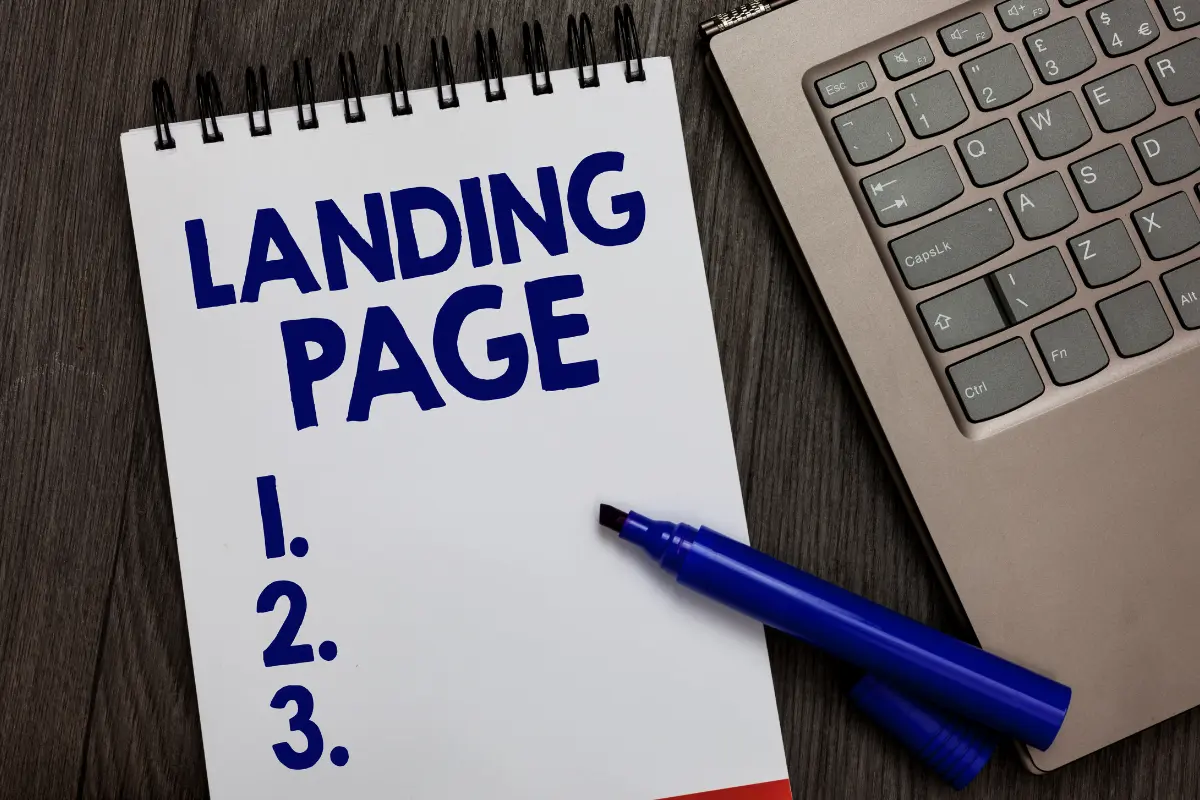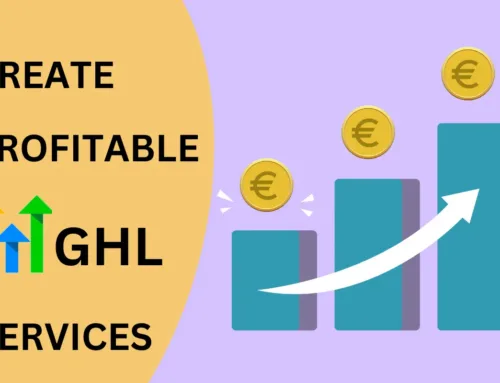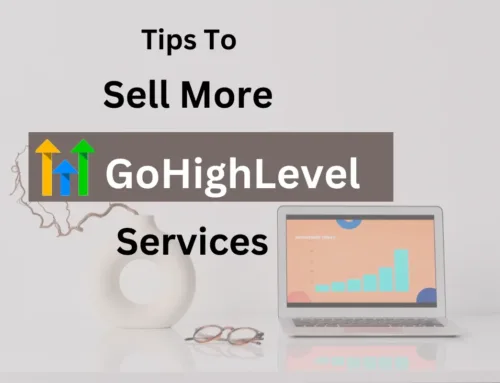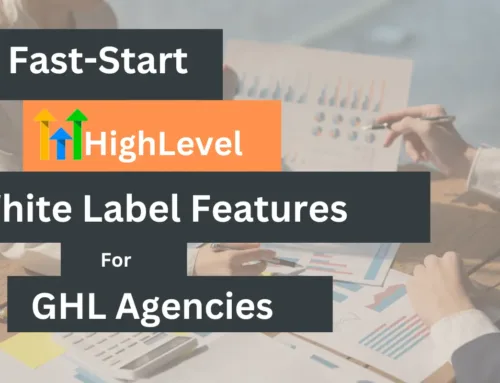In digital marketing, landing pages are often the gateways to customer conversion. They’re the online touchpoints that can make or break your campaign, where visitors decide whether to take action or simply navigate away.
But here’s the catch: not all landing pages are created equal. In fact, the difference between a high-converting landing page and a mediocre one can be like night and day, affecting everything from your customer acquisition costs to your overall ROI.
So, what makes a landing page convert? What are the essential elements that compel your visitors to take action, be it signing up for a newsletter, downloading an e-book, or making a purchase?
In the following paragraphs, we will delve deep into the anatomy of a high-converting landing page. We’ll cover everything from crafting compelling headlines and persuasive CTAs to using visuals that resonate with your target audience.
Element 1: The Headline
If your landing page were a book, the headline would be the title—something so compelling it grabs your attention and makes you want to read on. It’s the first thing visitors see when they land on your page, and it can either make or break their decision to stay.
Let’s delve into why the headline is such a critical element and how to make it as effective as possible.
Grabs Attention
In the digital world, you have mere seconds to capture a visitor’s attention. A strong headline acts like a hook, reeling in your audience. It should be bold, clear, and intriguing, giving visitors a reason to stay and learn more.
Conveys Your Unique Value Proposition
Your headline should quickly and succinctly convey your unique value proposition (UVP). What sets your product or service apart from the competition? Why should the visitor care? A headline that effectively communicates your UVP can be a powerful differentiator.
Creates Relevance
When visitors arrive on your landing page, they’re usually looking for something specific. Your headline should reassure them that they’re in the right place by aligning with their needs or solving their problem.
Triggers Emotional Response
The best headlines often trigger an emotional response, whether it’s curiosity, excitement, or even urgency. Emotional triggers can be highly effective in compelling visitors to take action, because decisions—especially buying decisions—are often emotional at their core.
Element 2: Visuals and Media
Quality visuals are an essential part of a high-converting adding page, especially in a time when information overload is the norm. When done right, images, videos, and other forms of media can enrich your landing page, making it more engaging and helping to convert visitors into customers.
Below we explore the integral role of visuals and media in creating a high-converting landing page.
Enhances User Engagement
A well-placed image or video can make your landing page more visually appealing, thereby increasing user engagement. Visuals can break up long chunks of text, making the page easier to read, and offer a different way to absorb information.
Reinforces Your Message
Visuals should be more than just decorative; they need to reinforce the message you’re trying to convey. For instance, if you’re selling a physical product, high-quality images that showcase the product from multiple angles can give potential customers a better sense of what you’re offering.
Builds Trust
Trust is a significant factor in conversion rates, and visuals can help establish this. Testimonials accompanied by photos, logos of well-known companies you’ve worked with, or even videos of customer reviews can go a long way in building credibility.
Drives Emotional Connection
Images and videos can evoke emotions more effectively than text alone. Whether it’s excitement, compassion, or desire, the right visuals can create an emotional connection with your audience, making them more likely to convert.
Offers Quick Information
In today’s fast-paced world, not everyone has the time or inclination to read through paragraphs of text. Infographics, charts, and short videos can convey complex information quickly and efficiently, catering to those who prefer visual learning.
Element 3: Unique Selling Proposition (USP)
Your Unique Selling Proposition (USP) is the linchpin that can set you apart. It is the singular message that identifies why your offering is not just different but better than the competition.
In the context of a high-converting landing page, your USP acts as the central narrative that binds all other elements together. A strong USP grabs the visitor’s attention instantly. In a sea of generic messages, a unique angle stands out.
Moreover, consumers are often overwhelmed with options. A clear USP simplifies the decision-making process by providing a focused perspective on why your product or service is the right choice.
A memorable USP makes your brand more memorable, increasing the likelihood of return visits and recommendations.
Ultimately, a compelling USP can tip the scales in your favor when a potential customer is deciding whether to proceed with a call-to-action.
Crafting Your USP
Solve a Problem: Your USP should address a specific problem your target audience faces and present your product or service as the solution.
Be Specific: Generic claims like “best quality” or “excellent service” are forgettable. Quantify your uniqueness, if possible (“30% more efficient,” “24/7 customer support”).
Keep it Concise: Your USP should be simple and straight to the point. It needs to be easily understood within a few seconds of reading.
Make it Prominent: Your USP should be one of the first things a visitor sees on your landing page. It should be well-integrated into your headlines, subheadings, and even in your images and videos.
Support with Evidence: Use testimonials, case studies, and statistics to back up your USP claims.
Test and Tweak: As with other elements on your landing page, your USP should not be set in stone. Use A/B testing to find the most effective wording and positioning.
Example USPs
“Fresh Organic Meals, Delivered in Under 30 Minutes—Guaranteed.”
“Stream Unlimited Movies and Shows, No Ads Ever.”
“The Only Fitness Program Designed Specifically for Remote Workers.”
Crafting a compelling USP requires a deep understanding of your audience’s needs, your industry landscape, and your own product or service capabilities. When you nail your USP, you not only improve the effectiveness of your landing page but also sharpen your entire marketing strategy.
Element 4: The Call-to-Action (CTA)
Arguably the most crucial component of your landing page, the Call-to-Action (CTA) is the linchpin that converts a visitor into a lead, customer, or subscriber.
Despite its significance, the CTA is often relegated to a hastily added button or a fleeting afterthought. However, crafting an effective CTA requires careful consideration, strategic placement, and continuous testing.
Why you ask? Because your entire landing page is designed to lead visitors to this moment—the click. A poorly designed or ambiguous CTA can undo all the hard work you’ve put into the other elements.
A clear and compelling CTA serves as a guidepost that directs the user towards the next steps. It removes guesswork and ambiguity.
Additionally, CTAs are inherently measurable, allowing you to track clicks, conversions, and ROI, thus providing actionable insights into user behavior.
Crafting an Effective CTA
Be Action-Oriented: Use strong action verbs like “Buy,” “Subscribe,” “Get Started,” or “Learn More.”
Create Urgency: Create a sense of urgency with time-sensitive language like “Limited Offer,” “Act Now,” or “Last Chance.”
Make it Stand Out: Use contrasting colors, bold fonts, and ample spacing to make sure the CTA button or link is highly visible.
Keep it Simple: Your CTA should be easy to understand. Complicated or clever CTAs can confuse visitors.
Place Strategically: Position your CTA where it’s most logical. The most common placements are above the fold, at the end of compelling content, or following a strong testimonial.
Size and Shape: The CTA button should be large enough to stand out but not so large that it overwhelms other content. The shape should also be easily clickable, especially on mobile devices.
A/B Testing: Always test different versions of your CTA to determine what drives the most conversions. Test the wording, colors, positioning, and even the shape of the CTA button.
Examples of Effective CTAs
“Get My Free E-Book Now!”
“Unlock Your Exclusive Deal!”
“Start Your Free Trial Today!”
Remember, your CTA is the gateway to conversion. It’s where your landing page’s various elements coalesce to prompt action. Therefore, it’s essential to give your CTA the attention it deserves, continually optimizing it for better performance.
Element 5: The Offer
At the heart of every high-converting landing page is an irresistible offer—something so valuable that your visitors can’t help but take action. Your offer serves as the nucleus around which all other elements revolve, including your headline, visuals, and call-to-action.
Your offer is the core value proposition that convinces visitors to engage with your business. It answers the visitor’s burning question: “What’s in it for me?”
Moreover, a strong offer can create a sense of urgency, prompting visitors to act immediately rather than postpone the decision.
In a crowded market, your offer can set you apart from competitors and make you the obvious choice for your target audience.
Crafting a Compelling Offer
Define the Benefit: Clearly articulate what the visitor will gain from taking action. Is it a solution to a problem? A way to achieve a desire? Make it explicit.
Be Specific: Vagueness is your enemy. Specify what the offer includes, whether it’s a free trial, a discount coupon, an exclusive guide, or a product sample.
Add Bonuses: Enhance the perceived value of your offer by adding bonuses like free shipping, extra features, or a complimentary consultation.
Create Scarcity: Limited-time offers or limited stock can make your offer more appealing due to the fear of missing out (FOMO).
Make it Easy to Claim: The process to claim the offer should be straightforward and simple. The more complicated it is, the more likely you’ll lose potential conversions.
Highlight Value, Not Price: Focus on the value your offer brings to the customer rather than the price. Use phrases like “Get $200 worth of services for just $99” to emphasize value over cost.
Social Proof: Incorporate testimonials or reviews that specifically mention the benefits of your offer. This can increase trust and encourage more conversions.
Examples of Irresistible Offers
“Sign Up and Get 30% Off Your First Purchase!”
“Buy One, Get One Free—Limited Time Offer!”
“Download Our Exclusive Guide to Improving Your SEO—Absolutely Free!”
Your offer is not just a product or a service; it’s a carefully crafted solution to your visitor’s needs or wants. The more closely your offer aligns with these needs or wants, the higher your conversion rates will be.
Therefore, it’s crucial to continually test, tweak, and optimize your offer to ensure it remains compelling and competitive.
Conclusion
Creating a high-converting landing page is not just a matter of stringing together random elements and hoping for the best. It’s an orchestrated effort that demands a deep understanding of your target audience, a compelling offer, and a seamless user experience.
From the first moment a visitor reads your headline, to the visuals that capture their attention, down to the unique selling proposition and the call-to-action—each element plays a critical role in guiding your visitors towards conversion.
Remember, your landing page is often the first point of contact potential customers have with your business. A poorly designed or confusing landing page could not only lead to missed opportunities but also tarnish your brand image.
On the flip side, a well-crafted landing page can be a powerful tool that supercharges your marketing campaigns, skyrockets your ROI, and solidifies your brand in the hearts and minds of your audience.
Start by understanding the key elements discussed in this blog: the headline, visuals and media, unique selling proposition, call-to-action, and of course, the offer. But don’t stop there—always be testing and optimizing.
What worked yesterday may not work tomorrow, and staying ahead requires continuous improvement.




